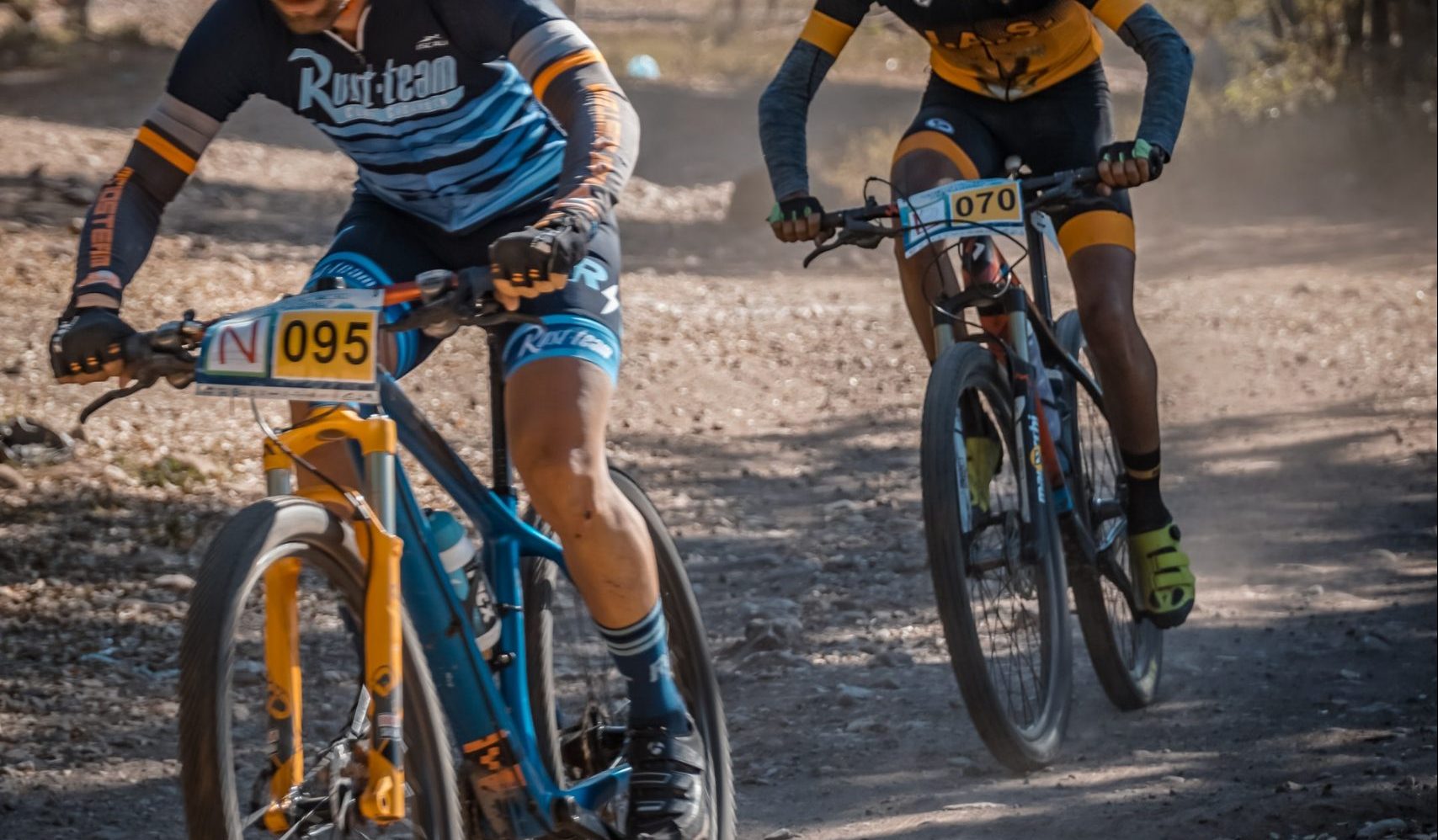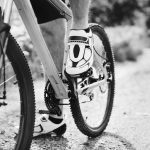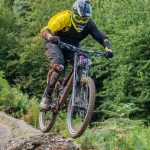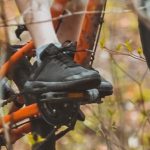When getting started in mountain biking, proper footwear is crucial for performance and comfort on the trails. With so many different shoe styles available, it can feel overwhelming trying to pick the right pair for your riding needs. This guide covers all the key factors to help you select mountain bike shoes ideally matched to your terrain, riding style, and personal fit preferences.
Flat or Clipless Pedal Systems
One of the first decisions when shopping for mountain bike shoes is whether you want a flat pedal shoe or a clipless style that attaches directly to the pedals. Each system has advantages depending on the type of mountain biking you do most often.
Flat pedal shoes feature a thick, grippy rubber sole designed to stick to pedals without any sort of cleat or clipping mechanism. Flat shoes prioritize flexibility for walking or hiking sections as well as easy foot repositioning and dismounting. Downhill and freeride disciplines tend to favor flats for simplicity and reducing injuries in crashes.
Clipless shoes use a cleat on the sole that clicks into binding mechanisms on special clipless pedals. They create a solid connection between your feet and pedals for optimal power transfer and pedal stroke efficiency. Cross-country, trail, and even some downhill riders often prefer this “locked-in” feel, despite feeling less flexible for walking.
Clipless Shoe Styles and Cleats
If opting for clipless mountain bike shoes, you’ll then need to decide between the two main cleat systems used for off-road riding:
Road-style clipless shoes feature a large, protruding cleat that engages with a wide body pedal. This design emphasizes pure pedaling performance and power transfer but sacrifices some walkability. Road cleats dig in and feel precarious when walking on hard surfaces.
SPD or trail-style clipless systems utilize smaller, recessed cleats in the shoe soles that are double-sided and shed debris better. SPD cleats click into smaller pedal clipper mechanisms. This style provides more freedom to walk or hike-a-bike compared to road shoes while still maintaining very efficient pedaling for mountain biking.
Most recreational mountain bikers looking for versatility choose the SPD or trail clipless shoe design. But roadies who prioritize absolute peak pedal efficiency may prefer the aggressive stance and minimized accessories of road clipless setups.
Outsole Grip and Traction
Regardless of the pedal interface used, most mountain bike shoes emphasize sticky, lugged rubber soles for maximum grip when riding over rocks, roots, and other slippery obstacles on the trails. The more technical and demanding the trails you tackle, the more aggressive the outsole tread pattern should be.
Cross-country racers sometimes run sleeker, flatter tread designs to reduce weight and rolling resistance on smoother trails. But any flat terrain is usually balanced with rock gardens or rooty sections, so moderate lugging is wise.
Downhill and freeride shoes really amp up the knobby tread depth and spacing. They need that tenacious traction to maintain pedal grip and avoid sliding off while smashing through chundery descents or big jump landings. Deep spacing also sheds mud and debris better.
Proper lugs not only grip well while pedaling but they provide essential traction for short hiking sections when you inevitably have to dismount and walk over tough terrain obstacles or around tight switchbacks.
Foot Protection Features
Another key consideration is how much protection and durability you need based on the mountain biking discipline.
Cross-country and casual trail riders typically favor lightweight, low-cut shoes with minimal armoring so they can maximize pedal feel and efficiency during all-day epics without weighing themselves down. But these lack safeguards against rock strikes or pedal bashings.
On the other end, downhill and freeride shoes include substantial toe box reinforcement and sometimes ankle protection to shield your feet from impacts during rougher descents or crashes. These gravity-focused shoes sacrifice a bit of pedal “connection” in favor of preventing foot injuries in harsh conditions. Their soles are ultra-stiff to prevent bending under heavy landings.
For general trail riding that mixes climbing and descending with moderately technical terrain, look for mid-cut height and some toe reinforcement without going total downhill overkill. This balanced design preserves pedal feel and breathability while still providing reasonable protection from trailside hazards.
Foot Fit and Sizing
While protection, pedal interface, and traction are important, the most critical factor in choosing comfortable mountain bike shoes is ensuring a great fit right out of the box. An improper fit leads to friction blisters, arch pain, numb toes, and general misery on the trails.
Quality bike shoes use stiff midsoles and snug uppers to efficiently transfer power to the pedals, so sizing them properly is essential. You don’t want excess room that allows your feet to move around and rub. But too tight will choke off circulation and cause cramping.
It’s best to get your feet professionally measured using a Brannock device, accounting for wide or high-volume foot shapes if needed. Then try on potential shoes and walk around, replicating your natural pedal stroke motion. There should be just enough room in the toe box to wiggle without excessive space. The instep and heel cup should feel locked securely in place.
Pay attention to all parts of your foot including arches, ankles, and toes. A “performance” fit should feel snug overall without any hotspots or loose spaces prone to causing blisters or numbness on long rides.
Breathability and Moisture Control
As you log miles sweating away on the trails, venting and moisture control become key comforts of any good mountain bike shoe. Without breathability and moisture transfer, your feet will get swampy and clammy, creating an unpleasant environment prone to chafing and blisters.
Look for shoes constructed with lightweight, highly perforated synthetic uppers along with mesh venting inserts. Shoes with just basic screen mesh tend to let in too much dust and debris, but real airflow perforations move cooling airflow across your feet as you ride.
On the interior, antimicrobial lining materials inhibit funky odors from developing while transferring moisture efficiently to the outer shoe layers where it can evaporate. Quality insoles also assist by wicking sweat away from your footbed, avoiding soaked socks.
If you really want a dry, fresh ride experience, look for mountain bike shoe models with integrated waterproof membranes like Gore-Tex. These effectively seal your feet away from rain, splashes, and wheel-spray while still allowing internal moisture vapor to escape.
Weight Priorities
Weight becomes an important spec for mountain bike shoes depending on your particular riding style and goals. In general, every bit of rotating weight reduction improves quickness and climbing efficiency. But that’s often a tradeoff with other key durability and comfort factors.
For XC racing and distance trail rides where you’re counting every pedal stroke efficiency, ultralight weight shoes can mean a distinct edge. They use minimal reinforcements and thin materials to shed grams. But those minimalist designs then sacrifice protection, foot support, and breathability.
On the flip side, downhill and enduro riders willingly accept heavier shoes loaded with protective armor and highly lugged traction, knowing those advantages offset any marginal weight penalties inherent to big impacts and violent terrain.
For the average trail rider mixing climbs and descents, a moderate shoe weight hovering around 400-600 grams provides a capable blend of stiffness, protection and comfort without going ultralight. The ideal balance keeps your feet fresh after multi-hour rides.
Style and Aesthetic
While it shouldn’t be a primary buying factor, looks and aesthetics impact many mountain bikers’ shoe purchasing decisions. Cycling footwear has come a long way in recent years with brands offering shoes that blend performance with popular sneaker styles and color trends.
Some riders just want that casual kicks vibe while still enjoying the advantages of a true cycling shoe design. Others embrace bright colors and crazy patterns that let their unique personalities shine through.
And of course, many seasoned riders stick with classic cycling shoe styling featuring fine details, contrast stitching, and timeless color schemes that let their expensive specialty footwear speak for itself.
No matter what strikes your fancy, shoe brands have stepped up the style game to ensure your cycling footwear makes a statement about you both on and off the bike. And fortunately, those aesthetic options no longer force compromises in terms of technical performance and features.
Choosing the perfect mountain bike shoe for your riding means factoring a range of key performance attributes. But taking the time to find that dialed combination of secure fit, custom footbed comfort, durable materials, and aesthetic appeal makes every minute spent charging trails that much more enjoyable. By understanding your needs and priorities, you can find mountain bike shoes truly tailored to help you ride stronger for longer on any trail.






